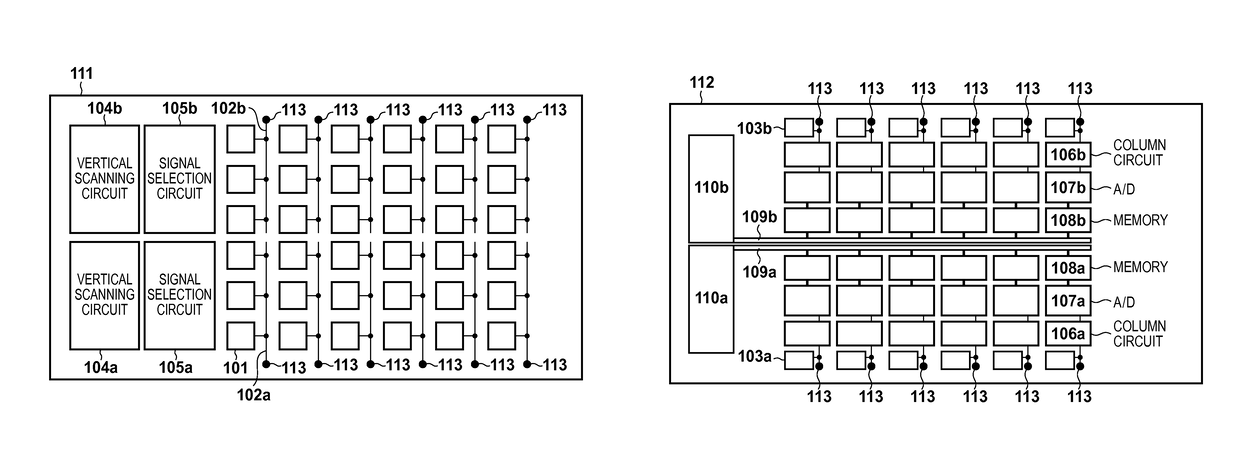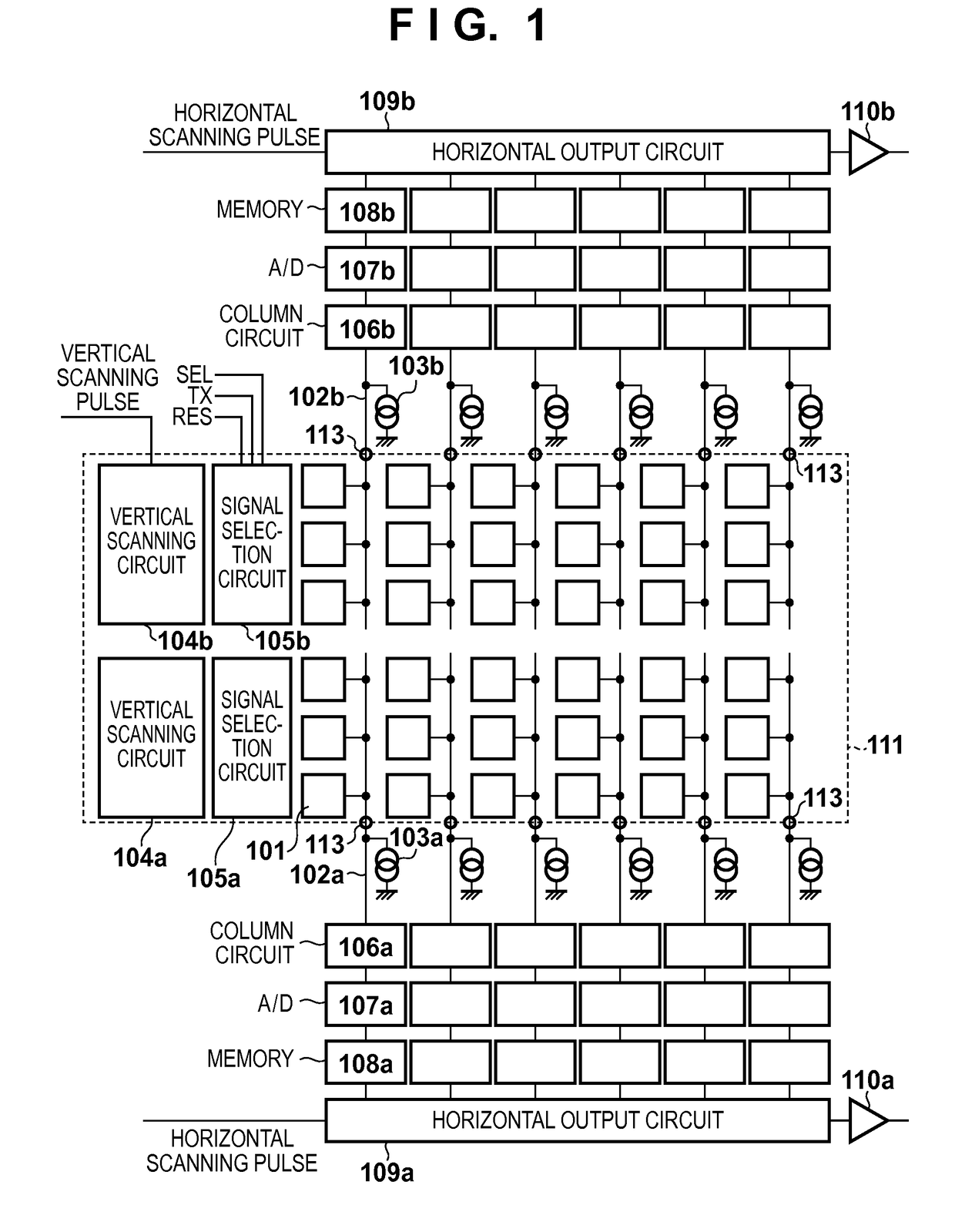Image sensor, image capturing apparatus, and cellular phone
a technology of image sensor and image sensor, which is applied in the field of image sensor and image capture apparatus and cellular phone, can solve the problems of increasing mechanical design load, image sensor interference with the light path of the optical viewfinder of the single-lens reflex camera, and large area of the peripheral circuit, so as to achieve high-speed readout operation without excessively increasing the area and cost of an image sensor
- Summary
- Abstract
- Description
- Claims
- Application Information
AI Technical Summary
Benefits of technology
Problems solved by technology
Method used
Image
Examples
first embodiment
[0026]The first embodiment of the present invention will be described with reference to FIG. 1. FIG. 1 describes the schematic arrangement of an image sensor according to the first embodiment of the present invention. Note that the image sensor of the present invention can be used for various image capturing apparatuses represented by a digital camera, a digital video camera, and the like.
[0027]As shown in FIG. 1, in the image sensor according to the first embodiment, a plurality of pixels 101 are two-dimensionally arranged. Note that FIG. 1 shows six pixels in each of the horizontal direction (row direction) and the vertical direction (column direction) for the sake of descriptive convenience. However, several millions to several tens of millions of pixels 101 are arranged in an actual image sensor. The detailed arrangement of the pixel 101 will be described with reference to FIG. 2.
[0028]As shown in FIG. 2, the pixel 101 includes a photodiode 201, a transfer switch 202, a floating...
second embodiment
[0059]An image sensor according to the second embodiment of the present invention will be described below. In the second embodiment, an image sensor in which a vertical output line (column output line) is divided into four lines in the vertical direction (column direction), and the end portion of each line is set as a connection point to the second semiconductor will be explained.
[0060]FIG. 5A is an overlooking view when viewed from the side of a first semiconductor 2111 in which the pixel area of the image sensor is arranged according to the second embodiment. Referring to FIG. 5A, vertical scanning circuits 104a to 104d, signal selection circuits 105a to 105d, a pixel area in which pixels 101 are two-dimensionally arranged, and divided vertical output lines 102a to 102d in the vertical direction on each column are arranged on the first semiconductor 2111. A connection point 113 for electrically connecting to a second semiconductor 2112 is arranged in the end portion of each of the...
third embodiment
[0067]FIG. 6 is a block diagram showing an arrangement of a cellular phone 300 according to the third embodiment of the present invention. The cellular phone 300 according to the third embodiment has the e-mail function, Internet connection function, image shooting / playback function, and the like, in addition to the voice communication function.
[0068]In FIG. 6, a communication unit 301 communicates voice data and image data with another phone by a communication method complying with a communication carrier with which the user has a contract. In voice communication, a voice processing unit 302 converts voice data from a microphone 303 into a format suited for origination, and sends the converted data to the communication unit 301. Also, the voice processing unit 302 decodes voice data from a call destination that has been sent from the communication unit 301, and sends the decoded data to a loudspeaker 304.
[0069]An image sensing unit 305 includes the image sensor described in one of ...
PUM
 Login to View More
Login to View More Abstract
Description
Claims
Application Information
 Login to View More
Login to View More - R&D
- Intellectual Property
- Life Sciences
- Materials
- Tech Scout
- Unparalleled Data Quality
- Higher Quality Content
- 60% Fewer Hallucinations
Browse by: Latest US Patents, China's latest patents, Technical Efficacy Thesaurus, Application Domain, Technology Topic, Popular Technical Reports.
© 2025 PatSnap. All rights reserved.Legal|Privacy policy|Modern Slavery Act Transparency Statement|Sitemap|About US| Contact US: help@patsnap.com



